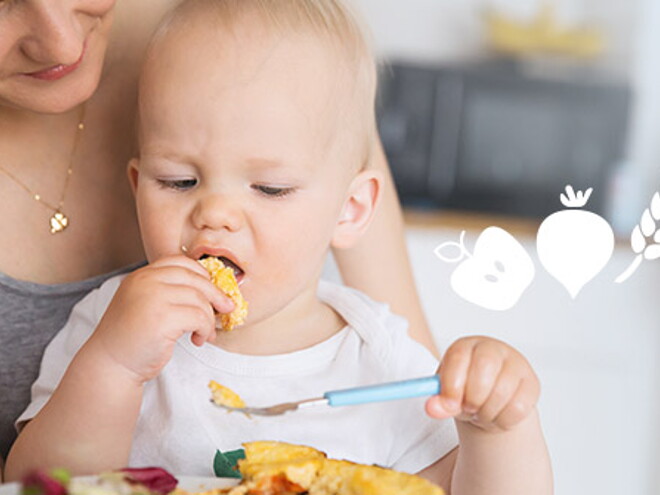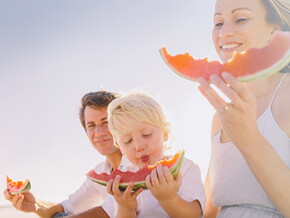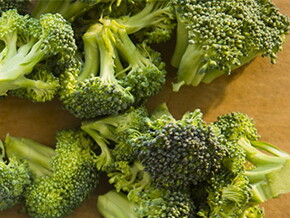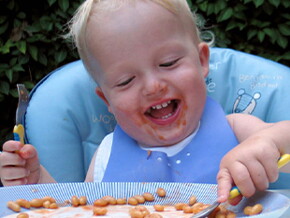
Healthy eating starts with you
It’s not just genes that you pass down to your baby—her eating habits are influenced by what and how she sees you eating at family mealtimes. She’s more likely to eat healthy foods, and be willing to try new foods, if she sees you eating them.
A healthy diet is all about eating enough of the nutrient-rich foods that your body needs—for example, grains, meat/fish/protein foods, fruits, vegetables, and dairy products—as well as drinking plenty of water, every day. Parents who lead by example when it comes to their food choices not only reap the benefits of their own balanced diet, but can feel encouraged by the positive impact it’s having on their baby’s diet too.
Enjoy your food
As well as demonstrating a link between the fruits, vegetables, snacks, and drinks in your diet and those in your baby’s diet, research has shown that she is more likely to give new foods a go if she sees you enjoying them first. In fact, your impact as a role model is more effective than simply offering a new food to your baby. “Studies show that there is more chance a young child will try new foods if they see a parent or caregiver happily eating them, compared to if they are offered new foods without having a role model with them at the table,” explains Anne Dattilo, PhD, RD, Associate Director of Nutrition Science at Nestlé Infant Nutrition. “They are also less likely to accept healthy foods if their parent or caregiver demonstrates a dislike for them in front of the child.”
So, be a positive role model now. Let your baby see the whole family enjoying mealtimes together to set her up for a future of healthy eating.
Sources
Birch LL, Doub AE. Learning to eat: birth to age 2 y. Am J Clin Nutr 2014; 99(3):723S-8S.
Black MM, Aboud FE. Responsive feeding is embedded in a theoretical framework of responsive parenting. J Nutr 2011; 141(3):490-4.
Blissett J, Fogel A. Intrinsic and extrinsic influences on children’s acceptance of new foods. Physiol Behav 2013; 121:89–95.
Dattilo AM Programming long-term health: Effect of parent feeding approaches on long-term diet and eating patterns. In: Early nutrition and long-term health, mechanisms, consequences and opportunities. Ed., Saavedra and Dattilo, Elsevier, 2017: 471-95.
Foterek K, Hilbig A, Kersting M, et al. Age and time trends in the diets of young children: results of the DONALD study. Eur J Nutr 2016; 55(2):611–20.
Gregory JE, Paxton SJ, Brozovic AM. Maternal feeding practices predict fruit and vegetable consumption in young children. Results of a 12-month longitudinal study. Appetite 2011; 57(1):167-72.
Hart CN, Raynor HA, Jelalian E, et al. The association of maternal food intake and infants’ and toddlers’ food intake. Child Care Health Dev 2010; 36(3):396-403.
Liberman Z, Woodward, AL, Sullivan KR, et al. Early emerging system for reasoning about the social nature of food. Proc Natl Acad Sci USA 2016; 113(34):9480-5.
Perez-Escamilla R, Segura-Perez S, Lott M, on behalf of the RWJF HER Expert Panel on Best Practices for Promoting Healthy Nutrition, Feeding Patterns, and Weight Status for Infants and Toddlers from Birth to 24 Months. Feeding Guidelines for Infants and Young Toddlers: A Responsive Parenting Approach. Durham, NC: Healthy Eating Research, 2017. Available at: http://healthyeatingresearch.org (Accessed April 11 2018)
Satter E. The feeding relationship. J Am Diet Assoc 1986; 86(3):352-56.


















